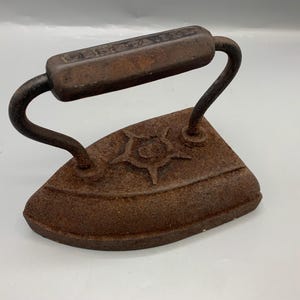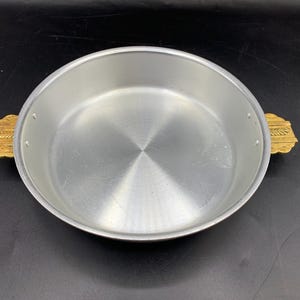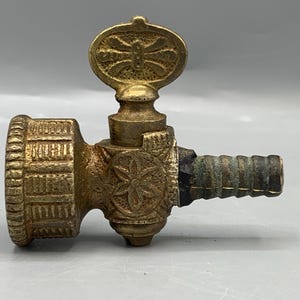
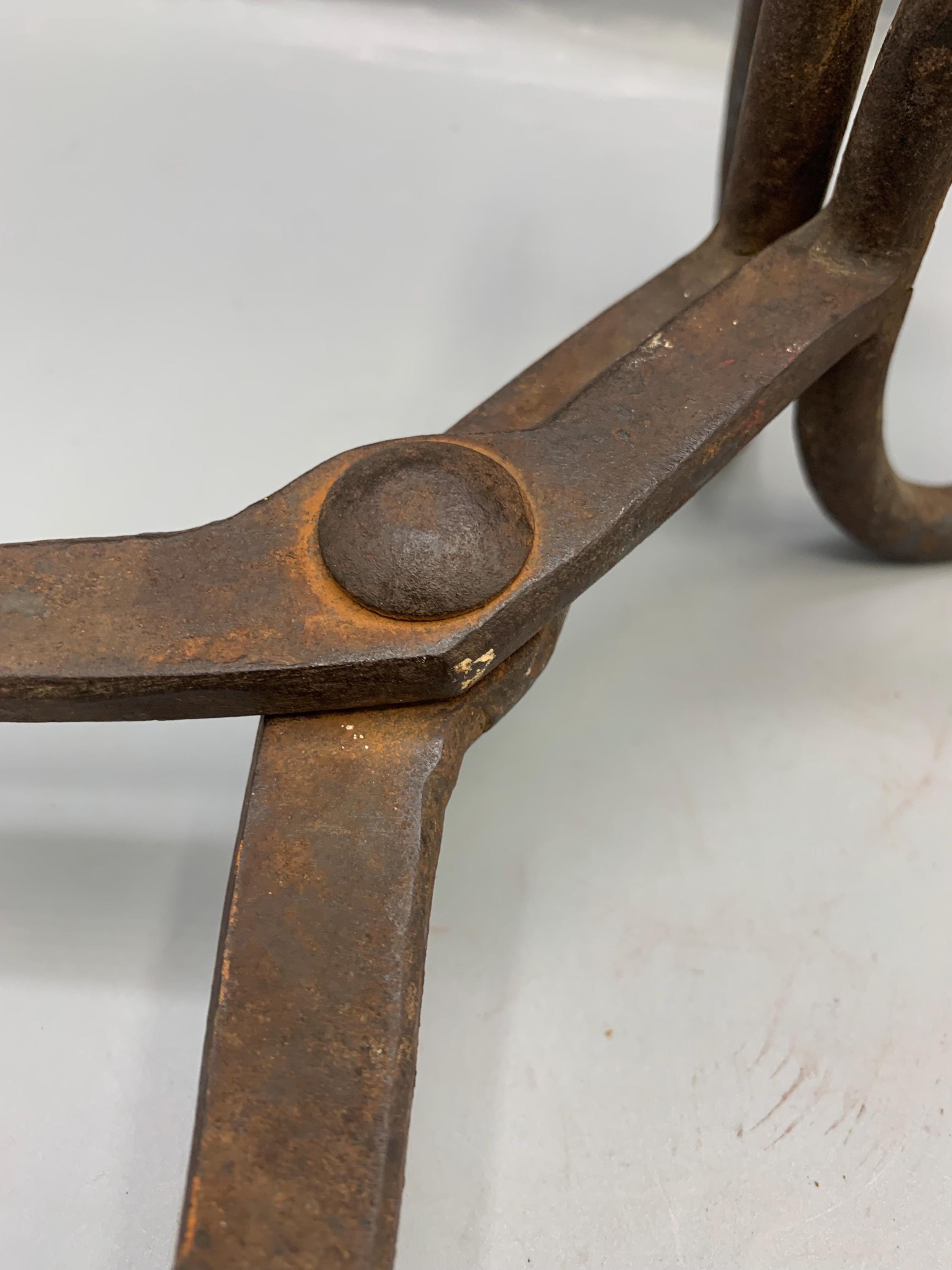
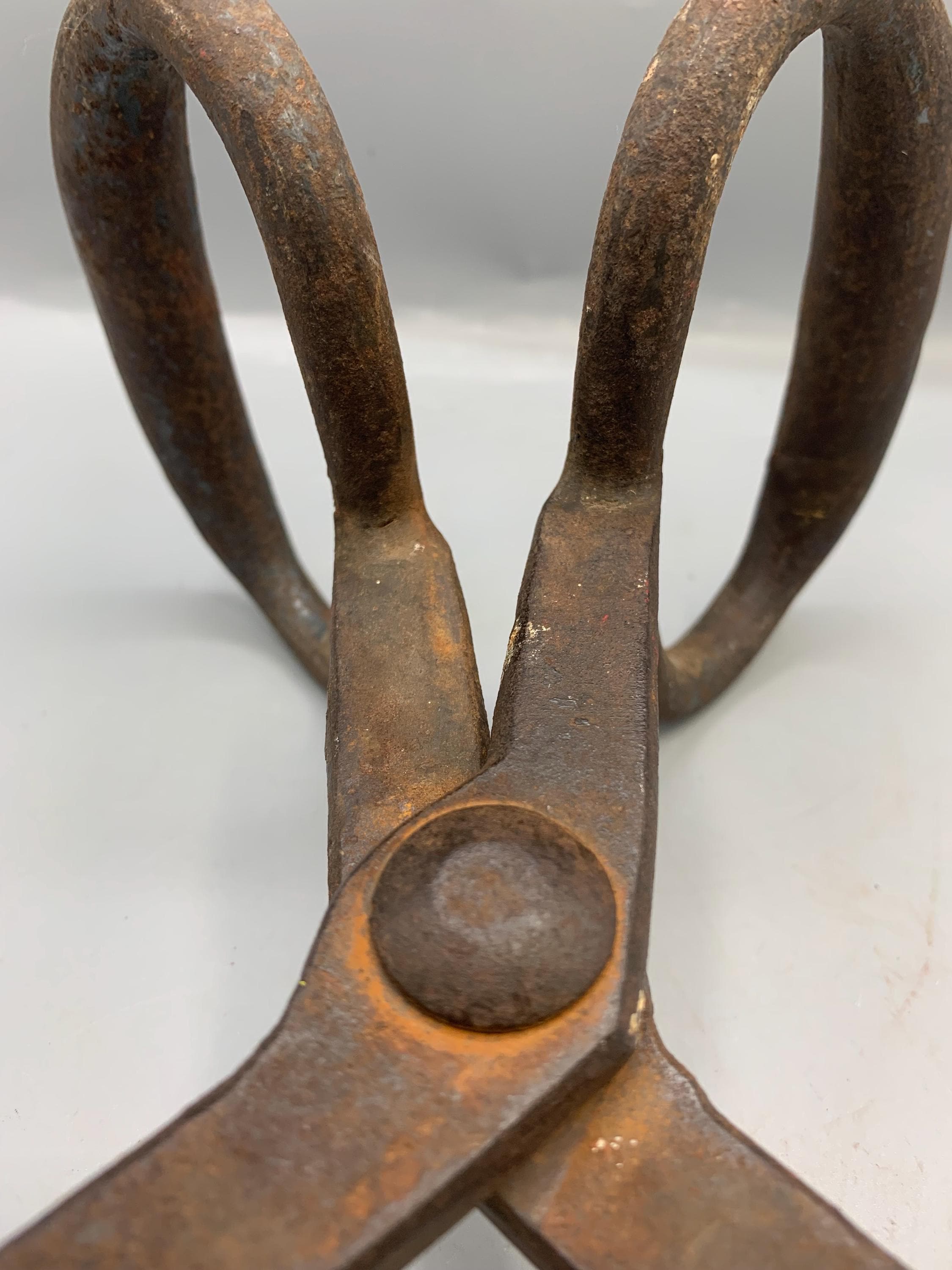
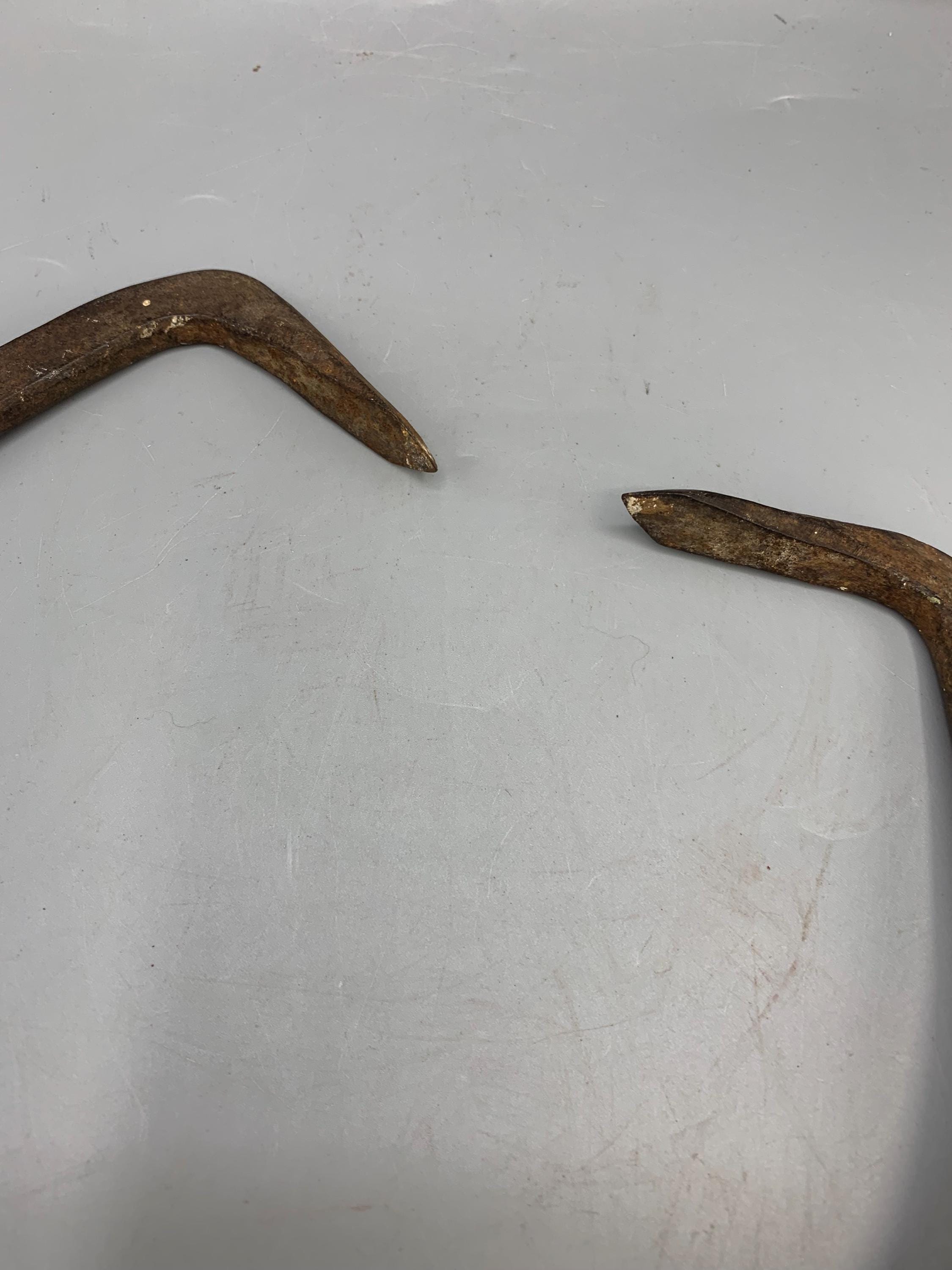
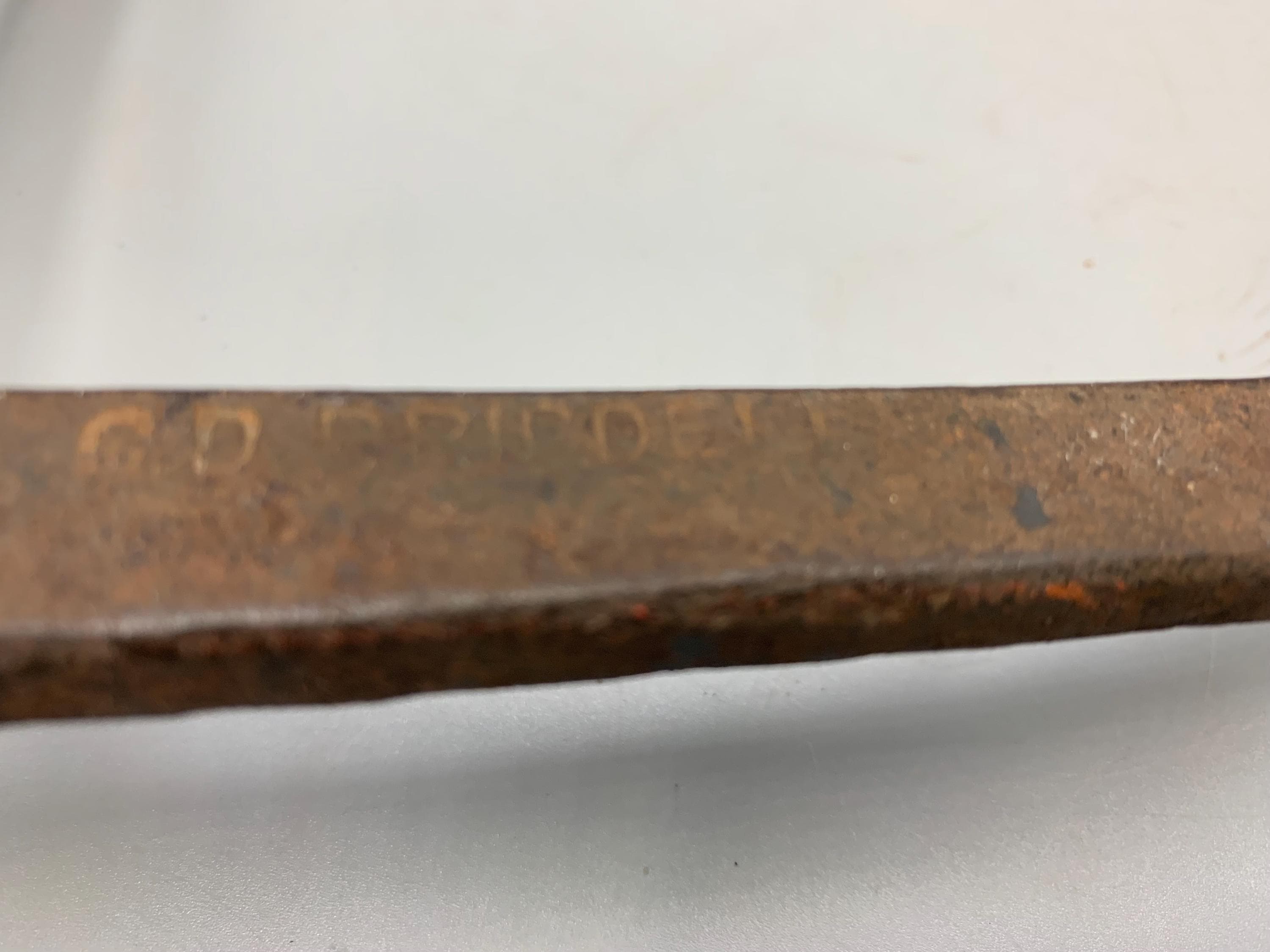
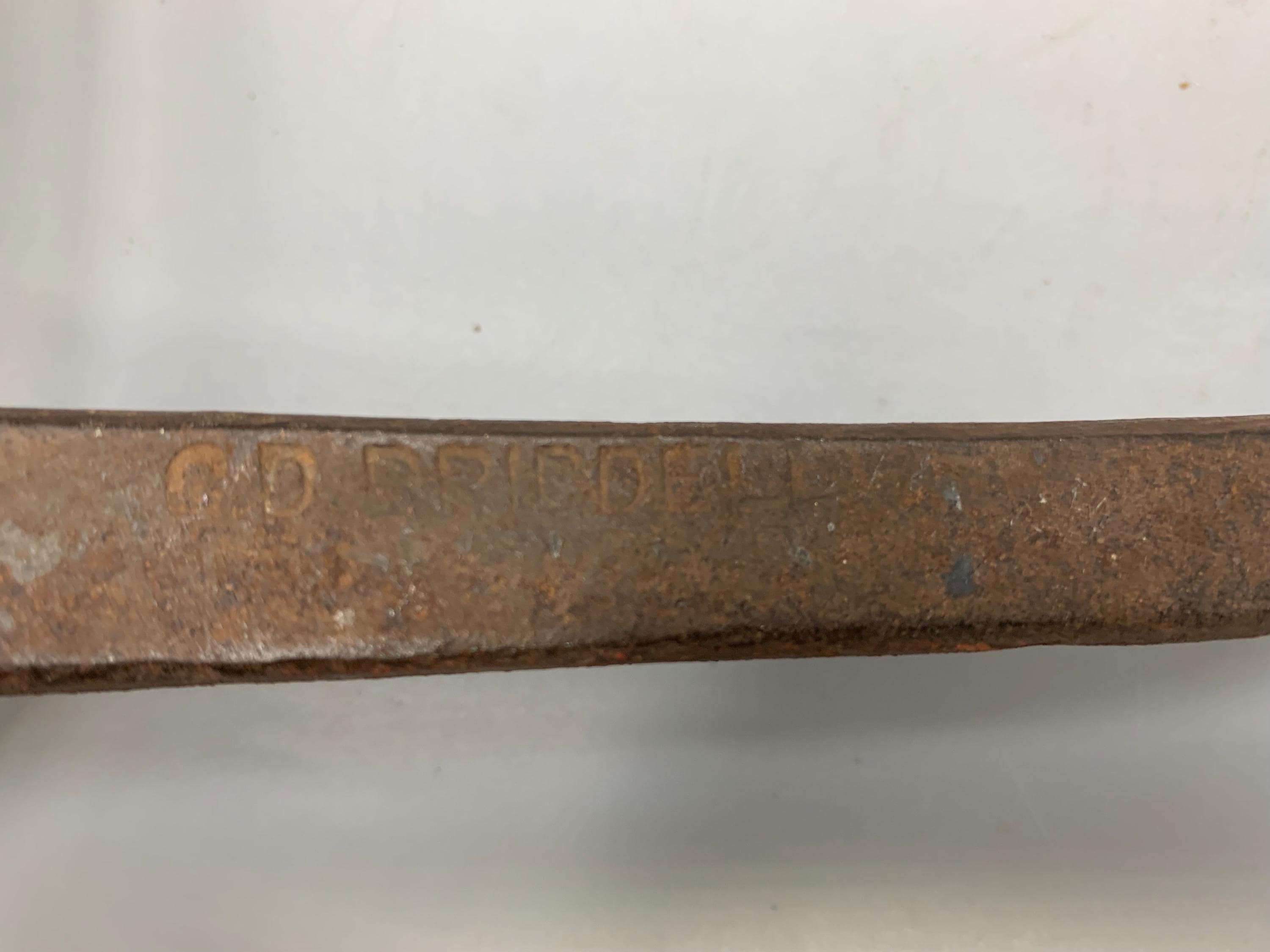
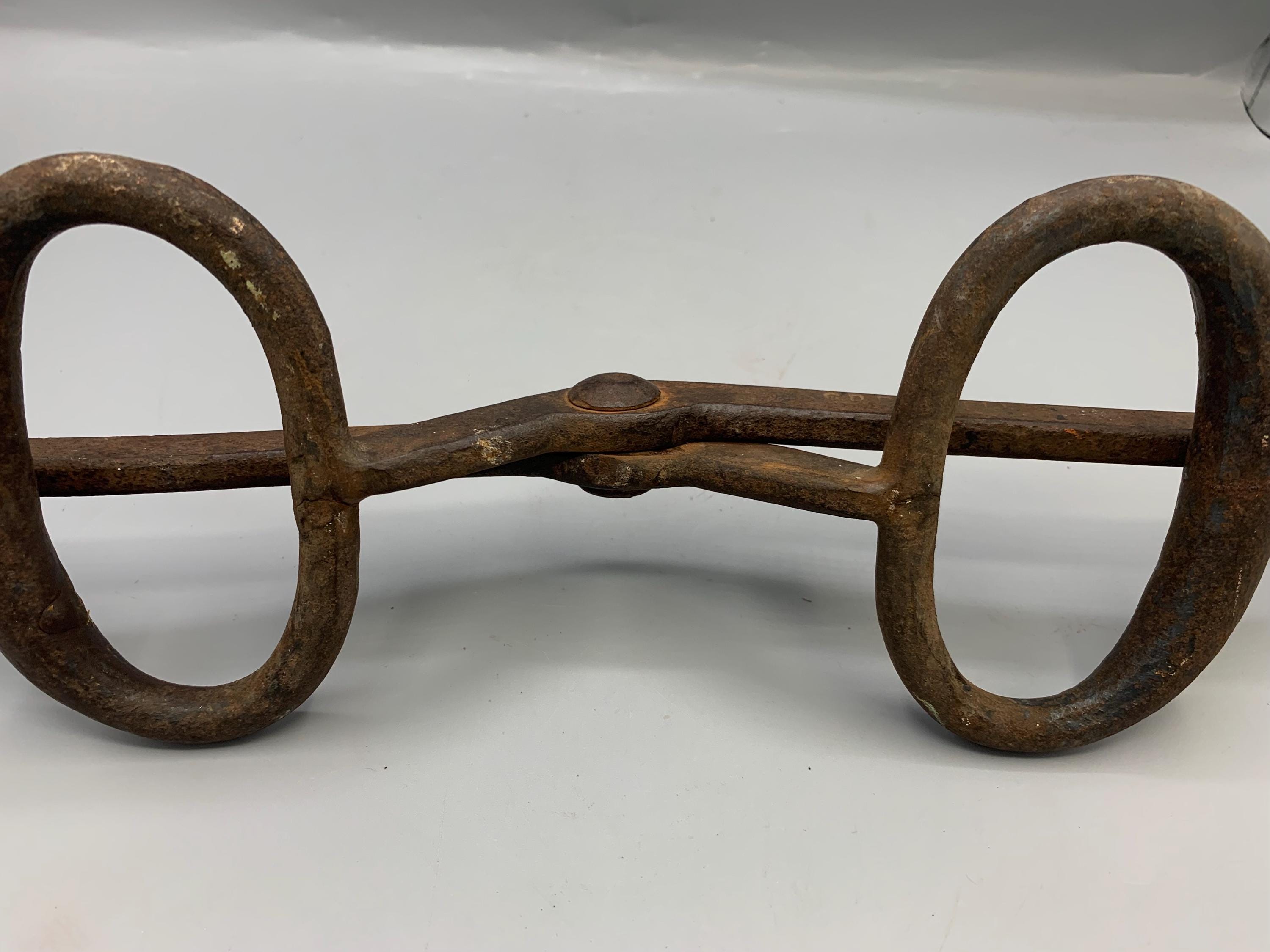
American Rusty Gold
1920s Ice Block Carrier made by Charles D. Briddell, USA
$28.00
-
DetailsThese were made between 1920-1930 in Crisfield, Maryland by their local infamous Chesapeake blacksmith Charles “Charlie” David Briddell Sr.
Crisfield, Maryland was once the “Seafood Capital of the World “because of the East Coast’s Sommerset Bay that harvested massive amounts of oysters and seafood. Crisfield was incorporated in 1872 and was responsible for sending seafood to the midwestern region of America. Fresh seafood was captured off the coast and then stored in icehouses that were located next to a train station built by the Pennsylvania Railroad System as part of the Eastern Shore Railroad.
Briddell made several of these model ice block hand-carriers for the Imperial Ice & Development Company as a special request from the ice company.
Charles Briddell was born in Marumsco, Somerset County-Maryland August 22, 1883. Charles was a “farm boy” who hated farm work. He much preferred puttering around in the blacksmith shop all day to toiling in the fields. Sometime in the 1890s, a thoughtful neighbor hired Charles to repair a pair of oyster tongs. Later in life, Charles Briddell would sometimes tell reporters that this turning point came at age 11. Other times, he would put it at age 13. His first payday totaled just a $1.50, but it inspired him to launch his first business at an age when kids today are still in middle school.
Soon, neighbors were bringing so many wagons, tools, and machines to the Briddell farm for repairs that, even while still in his teens, Charles had to build a two-story, 20-foot-by-40-foot workshop as well as he needed to hire employees. By the early 1900s, Charles decided to divert his services and business toward making new products rather than repairing old ones.
Charles quickly became the go to “smithy” for the bay’s seafood merchants and oyster harvesters.
Although a wealthy local celebrity blacksmith, Charles was a very bashful guy, but he fell for a pretty girl who sang in the choir at Quindocqua United Methodist named Ruth Maddox.
Every Sunday, he would travel seven or eight miles north from Marumsco Creek, hoping to catch her attention. Unfortunately, a lot of other boys were chasing after Ruth Maddox, too.
Young Briddell was not one to give up in the face of such adversity. Retreating into his beloved workshop, he emerged one winter Sunday with a made-by-his-own-hand sleigh that would glide smoothly along snow-covered roads. Ruth once told a reporter that she remembered the sleigh as “bright and shiny.” She also remembered the look on Charles’s face after she climbed aboard before they rode along the snow-covered countryside with the “sleigh bells jingling” on the horse’s neck and the “warm lap robe” over their knees.
When the weather got warmer, Charles showed up to pick up Ruth in a hand-built buggy equipped with newfangled rubber tires. The buggy’s other defining characteristic was its shape—it was unusually thin across the front. The sight of Charles and Ruth squeezed onto its seat inspired Charles’s friends to give the buggy a nickname…” They used to call it the ‘HMT’,” Ruth said. Which meant all over town as “Hug-Me-Together.” Charles and Ruth were married in 1905.
With Charles’s foundry being extremely busy he moved operations up into Marion Station, where his focus was on building various carts and buggies for customers all over Somerset County—and, increasingly, points beyond. He brought in a sales agent to drum up customers on the Eastern Shore of Virginia.
Disaster struck on two fronts. First, that Virginia sales agent misspent funds in ways that left Briddell saddled with unexpected debts that in turn created a shortage of the working capital he needed to buy supplies. Then, on a day when he and Ruth were attending a county fair in Pocomoke City, a fire tore through the workshop. Briddell didn’t have enough insurance, so he and Ruth lost all their money, the shop and even their new house. The Briddell’s were expecting their first child (Evelyn) at the time of the fire so the family headed back down to Marumsco Creek, moving in with Charlie’s parents. A second child died in infancy. Through these ordeals Charles redoubled his dedication to the Baptist faith, telling Ruth that it was time for them to “think more about the Lord and his works.” He vowed to tithe to his church for the rest of his days.
This didn’t sit well with Ruth, so she kept encouraging Charles to return to blacksmithing as a way to to deal with his depression and to consider starting over again in a new workshop.
It took a little while, but Charles went back to work in the workshop on his father’s farm. Charles started small, making oyster knives and tongs for shuckers in seafood houses. His business boomed and in 1914, so the family moved his operation to the seafood port of Crisfield, Maryland.
By 1920, the operation had moved into a manufacturing plant on Main Street. The then newly Chas. D. Briddell Company had 40 employees making tongs, knives, and muskrat traps for customers up and down the Eastern seaboard.
The owner of an ice plant in Crisfield told Briddell he should look into making ice carriers for local icehouses...so Charles did. Icehouse carriers and household ice tongs became the company’s best-selling product through the 1920s. By the late 1930s, Briddell Company was a national operation, serving customers from coast to coast. One of its customers was the Coca Cola Company.
Charles Briddell was returning home from a business trip on August 31, 1938, when he collapsed and died suddenly…he was 55 years old. He left Ruth behind, and six children, too including Charles Briddell, Jr. An estimated 1,000 people turned out for his funeral in Crisfield, Maryland to say goodbye to their longtime blacksmith. The pallbearers that day were the students in his Sunday School class at the First Baptist Church of Crisfield. After his death, his son Charles Briddell Jr. took control of his father’s factory.
Charles Jr. and one of his part time employees, Tim Culver, would later be credited with the invention of the American steak knife.
This item is the epitome of early 20th century ironworks.
Weighs 3 pounds 5 ounces
Length 16 inches
Handles/Grip measure 4” X 2”
The spikes spread out to 18 inches
MemoryLaneVintiques sanitizes all glassware, jewelry, resin made, wooden and glazed pottery before packing for shipment....100% Guaranteed!
ETSY INTELLECTUAL PROPERTY POLICY
As a venue for artists, designers, and makers, Etsy takes intellectual property rights very seriously. We comply with intellectual property laws and industry best practices in order to maintain the integrity of our creative marketplace. This Intellectual Property Policy explains how we address allegations of infringement, how authorized parties can submit reports of infringement regarding content on our marketplace, and how Etsy sellers can respond when their listings or shops are affected by a report.
ANY COPY AND PASTING OR PLAGIARIZING OF MATERIAL
ON MEMORYLANEVINTIQUES IS SUBJECT TO ETSY INVESTIGATION AND PENALTIES!
MemoryLaneVintiques research also protect our shop from Intellectual Property Theft by researching for violators of our material. Be respectful!
Chad & Jennifer Johnston (August 2024)
MemoryLaneVintiques uses artificial lighting in the photos of items.
